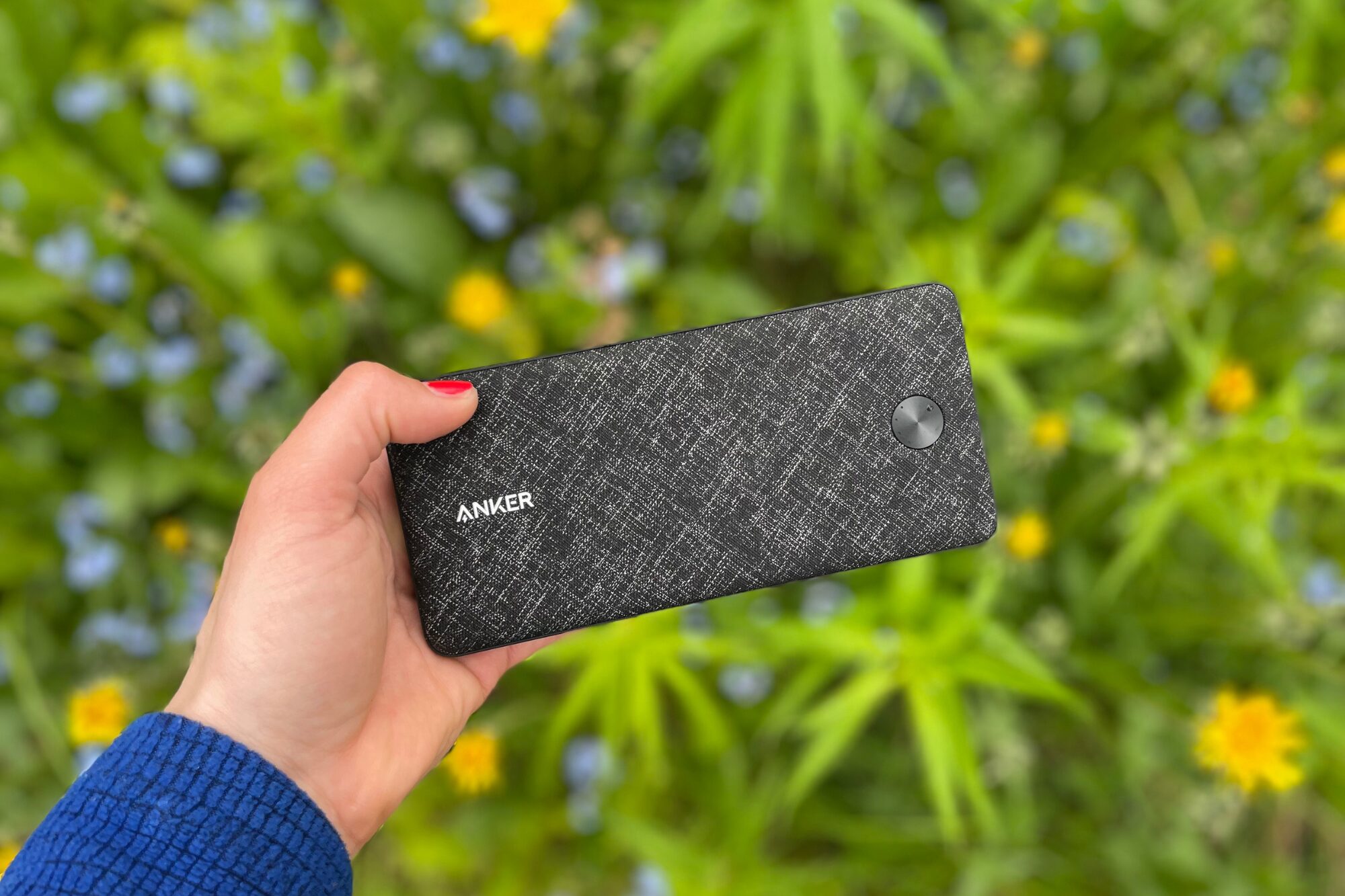Watching your phone edge toward the 1% battery mark with no power outlet in sight is especially worrying if you’re in the backcountry and rely on your phone for navigation and communication. While today’s phones typically have long-lasting batteries, if you’re heading out on a multi-day backpacking trip, you’ll need to recharge yours at least once. That’s where power banks come in.
Power banks are portable, rechargeable batteries that transfer power to other electronic devices, like your smartphone, tablet, or satellite communication device. Simply charge the battery from a wall outlet and take the power bank with you. When you need a charge, just plug your phone into the power bank.
Gear Editor Chelsey Cook spends weeks at a time in the backcountry, both guiding and on personal expeditions. She relies on power banks to keep her phone, Kindle, and inReach charged and ready to use during her trips. She tested numerous different models of power banks to create this buyer’s guide, from pocket-sized ones ideal for short trips to bulkier, powerful models that can charge multiple devices on longer expeditions.
Editor’s note: We updated this buyer’s guide on June 11, 2024. We announced the Anker PowerCore 13000 Power Bank as the Best Overall Power Bank and added superlatives for the Most Portable Power Bank and Best High Capacity Power Bank.
Our Picks for the Best Power Banks
- Best Overall Power Bank: Anker PowerCore 13000 Power Bank
- Best Budget Power Bank: Miady 10000mAh Dual USB Portable Charger
- Most Portable Power Bank: Goal Zero Flip 24 Power Bank
- Best High Capacity Power Bank: Anker 737 Power Bank
Best Overall Power Bank:
Anker PowerCore 13000 Power Bank
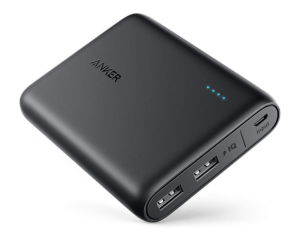
Features:
- Slim and compact given the capacity
- Includes a Mirco-USB cable
- Power IQ and VoltageBoost technology offers fast charging speeds
- Recharges in seven hours
Why we like it: Compact, durable, and powerful
What we don’t like: Uses a Micro-USB to recharge, which is slow and a little outdated
Capacity: 13,000 mAh | Outputs: 2 USB-A | Inputs: Micro-USB | Weight: 8.5 oz | Dimensions: 3.8 x 3.1 x 0.9 in
The Anker PowerCore 13000 ($36) is Chelsey’s go-to power bank for most of her backpacking trips. She’s used the same one for several years and likes how compact and durable the power bank is, while still providing a powerful charge. She hasn’t noticed an appreciable difference in capacity despite several years of use and has dropped her power bank more times than she can count without causing any damage.
This slim, compact power bank can charge a smartphone between three to five times, depending on the model of the phone. It also comes with two high-speed USB-A ports to charge two devices simultaneously, and a Micro-USB port to recharge. The one downside it that it takes seven to eight hours to recharge with a 2A wall charger, which is longer than most of the power banks in this guide.
Best Budget Power Bank:
2-Pack Miady 10000mAh Dual USB Portable Charger
Features:
 Comes in a pack of two
Comes in a pack of two- Easy LED button to check the power remaining
- Automatically powers off if not connected to a device
- UBS-C and micro-USB charging
- Holds 2 smartphone charges
- Takes 5 hours to recharge
Why we like it: Great value for a two-pack, slim and lightweight
What we don’t like: Slow to charge, starts to lose capacity after several months of use
Capacity: 10,000 mAh | Outputs: 2 USB-C | Inputs: USB-C and micro-USB | Weight: 7.7 oz each | Dimensions: 3.7 x 1.6 x 0.8 in
The 2-Pack Miady 10000mAh Portable Charger ($22) is our pick for the best budget power bank. It comes with two power banks for about half the price of most other banks, and the quality is still impressive for such a low price. Each power bank holds two smartphone charges, and each one comes with two USB output ports, so you could potentially charge four devices simultaneously. The power banks are relatively slim and compact and are equipped with over-heat, over-surge, over-charge, and short-circuit protection.
The low price point does come at a cost, however. The power banks don’t have a USB-C port and are slow to recharge. They also seem to lose their capacity quicker than more expensive devices. We noticed a change in capacity after a few months of use.
Most Portable Power Bank:
Goal Zero Flip 24 Power Bank
Features: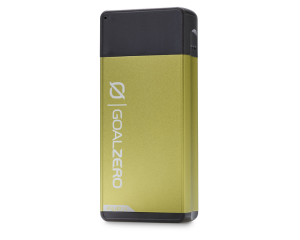
- Small enough to fit in your pocket
- Easy-to-read battery indicator
- USB port for input and output, with a flip-out input USB for easy recharging
- Provides 2 smartphone charges and a 50% boost to tablets
- Only takes 4 hours to charge the power bank
Capacity: 6,700 mAh | Outputs: 1 USB- A | Inputs: USB-A flip out | Weight: 4.6 oz | Dimensions: 3.7 x 1.6 x 0.8 in
Why we like it: Compact, lightweight, and great for short-term phone charging
What we don’t like: Flip-out USB feels flimsy and can be hard to charge off a wall charger
At just over four ounces and small enough to fit in your pocket, the Goal Zero Flip 24 ($30) is our pick for the most portable power bank. Despite its small size, this power bank holds two smartphone charges and can recharge in just four hours. A flip-out USB input port means you don’t have to carry a recharging cable, either. Simply plug the Goal Zero Flip 24 directly into a wall charger. Chelsey does find the flip-out port to be a little flimsy and difficult to plug into a wall charger. She also often pairs the Goal Zero Flip 24 with a Goal Zero Nomad 10 solar panel to recharge her power bank on longer trips.
Goal Zero also offers an even smaller power bank, the Goal Zero Flip 12. However, it only holds one smartphone charge. With such a low capacity, we didn’t find it to be the most practical power bank, except for day hikes and quick overnight backpacking trips.
Best High Capacity Power Bank:
Anker 737 Power Bank
Features: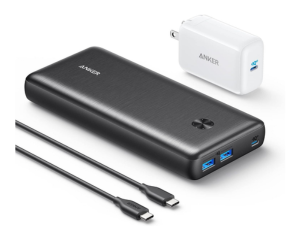
- Can simultaneously charge three devices
- Power IQ 3.0 technology offers fast charging speeds
- Capable of charging your laptop
- Takes 2.5 hours to recharge with the Anker wall charger
- 18-month warranty
Why we like it: Incredibly powerful in a relatively small, light package
What we don’t like: Expensive
Capacity: 25,600 mAh | Outputs: 2 USB-A, 1 USB-C | Inputs: 1 USB-A, 1 USB-C | Weight: 1.3 lbs | Dimensions: 7.2 x 3.2 x 0.9 in
The Anker 737 Power Bank ($110) may be the most expensive power bank on this list but with good reason. It has an impressive 25,600 mAh capacity, while still being compact and lightweight enough to be brought backpacking. Chelsey uses the Anker 737 Power Bank on longer expeditions and while guiding Denali, and can get over six iPhone 12 charges from it. It also easily powers her inReach and Kindle, and with two USB-A ports, she can even charge devices simultaneously. Anker also claims that their 737 Power Bank can charge laptops. With the included Anker wall charger, the power bank also recharges in a remarkable two-and-a-half hours.
At over a pound, this power bank is nearly twice as heavy as other power banks in this guide. If weight is a concern, we recommend only using the Anker 737 Power Bank on expeditions that are a week or longer, and sticking with a lighter power bank for shorter trips.
Honorable Mentions:
Goal Zero Flip 36
Features: 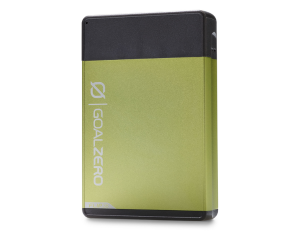
- Flip-out USB-A input port
- 10,050 mAh capacity
- Rechargeable through Goal Zero Nomad solar panel
- Charges in 5 hours
Chelsey has been using the Goal Zero Flip 36 ($40) as a backup, medium-capacity power bank to her Anker PowerCore 13000. It holds a similar amount of power and recharges her smartphone up to three times. The flip-out USB-A port can be convenient for charging because you don’t need a cord, however, it feels flimsy and can be hard to set up on a wall charger because of how the power bank hangs off the flip-out port. Chelsey often brings a Goal Zero Nomad 10 solar panel on longer expeditions and uses it to recharge her Goal Zero Flip.
iMuto 20000mAh Portable Charger
Features: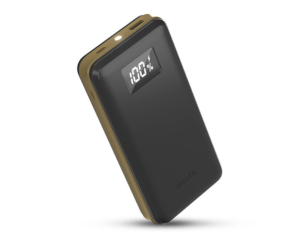
- Two USB ports for fast dual-device charging
- 20,000mAh high capacity
- LED display screen and built-in flashlight
- Works with Micro-USB, USB-C, and lightning cable
This iMuto 20000mAH Portable Charger is a compact power bank with enough juice to charge your phone up to eight times. The LED screen is an excellent addition and shows how much battery you have left in an easy-to-read digital format. There’s even a built-in LED flashlight, great for camping and useful in a blackout. The power bank has ports for Micro-USB, USB-A, and USB-C. It also comes with a Micro-USB cable, a waterproof travel pouch, a user guide, and an 18-month warranty. While the power bank itself is small, it’s far from the lightest in this guide and weighs over a pound.
Ekrist 25800mAh Power Bank
Features:
- Two USB ports (2.1A and 1A)

- 25,800 mAh capacity
- Recharges in up to 12 hours with a 2.1A input charger
- Four LED battery indicator lights
If you’re looking for a budget-friendly portable charger with high capacity, the Ekrist 25,800mAh Power Bank ($25) is a good choice. With a 25,800 mAh capacity and two USB ports, the Ekrist portable charger can charge two devices simultaneously and holds six to eight phone charges. It has four LED lights that show the remaining power. However, it doesn’t have USB-C ports and takes a long time to charge devices, as well as recharge.
About our testing process
The ExplorersWeb power bank testing team, comprised of Chelsey Cook and Jovana Dosenovic, often spends weeks at a time in the backcountry, guiding clients on high-altitude mountaineering trips and exploring remote areas of the world on their personal expeditions. They rely on numerous electronics to support them on these trips, including smartphones for navigation and satellite devices for communication. While most electronics have enough battery life to get you through an overnight backpacking trip, Chelsey and Jovana rely on power banks to keep their devices charged on longer expeditions.
In October 2022, Jovana used her expertise and experience with power banks to create this buyer’s guide. It was then taken over by Gear Editor Chelsey Cook in June 2024. As a mountaineering and backpacking guide in Alaska, she often spends four months a year in the field, with trips lasting up to three weeks.
Chelsey never goes into the field without her smartphone, her Kindle, and her inReach, and needs a power bank that can easily charge all three while still being light enough to carry in her backpack. Because she’s in the backcountry so often, with very quick turn-around times, she also values power banks that are durable, don’t lose their capacity after repeated use, and recharge quickly. Her favorite everyday power bank is the Anker PowerCore 13000, and she’s been using the same one for several years.
To compile this buyer’s guide, Chelsey tested power banks on expeditions up Denali’s West Buttress, on backpacking trips in remote Alaska, and while traveling through South America for two months. She tested power banks with different capacities and ports to meet a variety of charging needs, and looked for power banks that were lightweight, durable, and quick to both charge and recharge.

Chelsey relies on her power banks to charge multiple devices, including her inReach. Photo: Chelsey Cook
Things to consider when buying power banks
Capacity
Most power banks measure their capacity by millamps per hour, or mAh, ranging from as low as 5,000 mAh for smaller power banks, to over 20,000 mAh for larger ones. Smartphones, when fully charged, usually contain 3,000 to 4,000 mAh, so a 10,000 mAh power bank, the typical capacity for a medium-sized battery, could potentially charge a smartphone 3 times.
While it may seem like a good idea to get the largest capacity power bank you can find, large capacity power banks are heavier and bulkier than small capacity power banks. If you’re backpacking and looking to save weight, only buy the size you need. Chelsey typically brings a 10,000 mAh power bank for backpacking trips up to three or four days in length. That’s plenty to keep her phone, Kindle, and satellite device charged. For longer trips, like when she’s spending three weeks on Denali, she’ll either double up on 10,000 mAh power banks or bring Anker 737 Power Bank, which has a 25,600 mAh capacity. Chelsey also brings a small solar panel on multi-week trips, which she uses to recharge her power banks.

Different capacity power banks are generally different sizes. The green power banks is half the size, and half the capacity, of the black one. Photo: Chelsey Cook
Charging and recharging speeds
The best power banks are the ones that both recharge quickly and charge your devices quickly. High-capacity power banks typically take longer to charge than lower-capacity power banks. The smallest capacity power bank in this guide, the Goal Zero Flip 24, takes around four hours to recharge, while the largest, the Anker 737 Power Bank takes over 17 hours with a standard wall charger.
How quickly a power bank recharges and charges depend on the type of in and out port it has. A 1A USB port, which provides one amp of electrical power, is the slowest, while the 2.1A USB port is marginally faster. The fastest and most efficient charging port is the USB-C.
Many devices, including power banks, claim to support “fast charging” when charging a phone or tablet. However, there is no standard as to what “fast charging” actually means. Each device can handle different amounts of power, and all the pieces in a charging system, including the phone, power bank, and charging cable, affect how quickly power is delivered.
The output of a power bank itself is determined by amperage, the amount of electricity flowing from the power bank to the battery, and voltage, the strength of the electric current. Multiplied together, you get wattage or total power. “Fast charging” devices, including power banks, usually deliver 15W or more. While that may sound desirable, many small devices like headphones and watches can’t tolerate that much power. Using a “fast charging” device on a small electronic can cause irreversible damage to your battery life.
Types of in and out ports
Most small electronic devices use three standard ports: Micro-USB, USB-A, and USB-C. Micro-USBs are rarely used anymore, though can still be found on power banks. USB-A ports are more common, both as input and output ports. Flip-out USB-A ports, like on the Goal Zero Flip 24, eliminate the need for a charging cable to recharge. USB-C, the same small port used on the latest iPhones, is the most common port, and generally the most efficient.
Some power banks have several types of ports, which is useful when charging different devices. Just make sure you have the correct charging cable for the ports your power bank has.

We like the Goal Zero Flip 36 but are concerned about the durability of the flip-out port. Photo: Chelsey Cook.
Frequently asked questions about power banks
Is a power bank worth it?
Power banks are a lightweight, relatively inexpensive backup plan for when your phone runs low on battery. They’re also a vital piece of gear for backpackers, as they can keep your phone and satellite communication device charged over the days or weeks you’re in the backcountry. Chelsey brings them on all of her expeditions, and they help keep her phone powered for navigation, her Kindle charged for long storm days in tents, and her inReach’s battery full to deal with an emergency.
How long does a power bank last?
The power banks in this guide should perform for several years. Chelsey’s been using the same Anker PowerCore 13000 for nearly four years. All batteries do eventually degrade with regular use, however, and you may notice that older power banks don’t hold as much of a charge as they used to.
What capacity power bank do I need?
The power banks on this list are all portable enough to take backpacking and traveling. Most users stick with a power bank that is around 10,000 mAh, which will provide around three smartphone charges. If you’ll mostly be using yours on short trips, like overnight backpacking, consider something closer to 5,000 mAh, like the Goal Zero Flip 24.
If you want to charge a tablet or laptop or are going on a week-long trip, look for a power bank closer to 20,000 mAh, like the Anker 737 Power Bank. Just keep in mind that power banks with more capacity are often larger and heavier.
Can I bring a power bank on an airplane?
You can bring most small power banks on an airplane, but they can’t be kept in checked luggage. Make sure to keep them in your carry-on.
